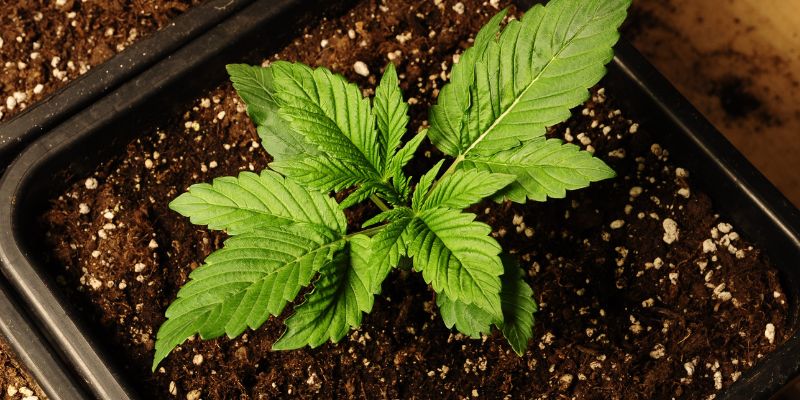Growing cannabis in soil has been the main choice of growers worldwide for decades. Even with the increase in alternative growing methods over the years, soil is still the most popular method for growing cannabis plants. Soil is versatile, inexpensive, and full of beneficial microbes and bacteria that work together to deliver many advantages to growing plants. Soil holds all these elements together better than many other mediums, but when too many nutrients build up, soil can become toxic, or as commonly referred to in the cannabis community, “hot.”
What is Hot Soil?
Whether growers use synthetic or organic nutrients, soil retains these nutrients better than most other grow mediums. Even if too much nutrition is delivered, soil holds onto it and can create a toxic environment that growers refer to as “hot soil.” This does not refer to any visual characteristics or temperature of the soil but rather refers to the additives and nutrients in excess. This is a common problem that many beginning growers experience, as they can be overzealous in wanting to feed and fertilize their plants as much as possible. Overfeeding your plants is also called nutrient burn, when plants receive more fertilizer than they can metabolize.
This can happen for a variety of reasons, depending on the type and amount of nutrients used and the type of water used. For example, if you use tap water to mix your nutrients, you could experience a build-up of calcium as tap water is often hard water and already plentiful with calcium. Adding cal-mag to plants with tap water could create a situation with too much calcium in the soil. You should always be aware of everything that you are feeding to your plants.
Synthetic and organic fertilizers can cause hot soil. Hot soil can be caused by growers adding too much organic compost, such as bat guano, in an organic recipe. This can create a situation of nitrogen toxicity that can be detrimental to a plant’s survival. Many growers start with a living soil designed to deliver consistent nutrients to the plants as they need it and add compost teas as needed for a supplement.
You will not be able to spot hot soil by the appearance of the soil itself but will have to look for symptoms in your plants. Hot soil can create a host of various problems with your plants.
Signs of a Hot Soil Problem
Cannabis plants will quickly show visual signs of being overfed. One of the first symptoms to appear is tip burn, where the tips of the leaves will turn yellow or brown depending on the severity of the toxicity of the soil.
Noticing symptoms of a nutrient deficiency is another sign of hot soil, this is due to nutrient lockout. Too much of one nutrient could cause your plant to be unable to metabolize other nutrients, creating a nutrient deficiency. Depending on the nutrient your plants are deficient in, they can exhibit different symptoms, such as yellowing of the leaves, dry curling brown tips, brown spots, or purplish colors appearing on the leaves.
How to Fix Hot Soil
Identifying hot soil is important, although knowing how to fix it is crucial to your plant’s success. Fortunately, correcting a hot soil problem is not difficult to do if it is caught early before it causes serious toxic effects to your cannabis plants. The first thing to do is to flush your cannabis plants with water that has the correct pH level and use an EC meter to check the electrical conductivity and parts per million to make sure they are back within a safe range. Adjust your nutrient regimen and introduce it slowly back to the soil.
Cannabis plants grown in soil should indicate healthy EC ratings as follows:
- Seedlings – 0.8 to 1.3
- Clones – 0.5 to 1.3
- Vegetative phase – 1.3 to 1.8
- Flowering phase – 1.2 to 2.0
Some products can help with flushing the plants if freshwater is not working to solve the issue. Every grower should have a type of yucca extracted on hand that aids with flushing more efficiently by making your water retain even more moisture. Water your plants until you see a large amount of runoff and flush weekly to help prevent a recurrence of hot soil, especially when using salt-based fertilizers.
If you notice an EC reading that exceeds 1.8 in the vegetative phase, just add more water to bring it down, and if it’s too low, add more fertilizer. It can be that simple if you stay on top of it and pay attention to your plants. Always use high-quality cannabis seeds from reputable sources for the best success in growing quality cannabis plants.
Mosca Seeds is recognized internationally as a world-leading cannabis seed breeder practicing quality cannabis genetics. With more than 15 years of experience and several cannabis cup awards, Mosca offers something for every grower. Check out the Seed Bazaar now and pay attention to your plants to prevent hot soil.
